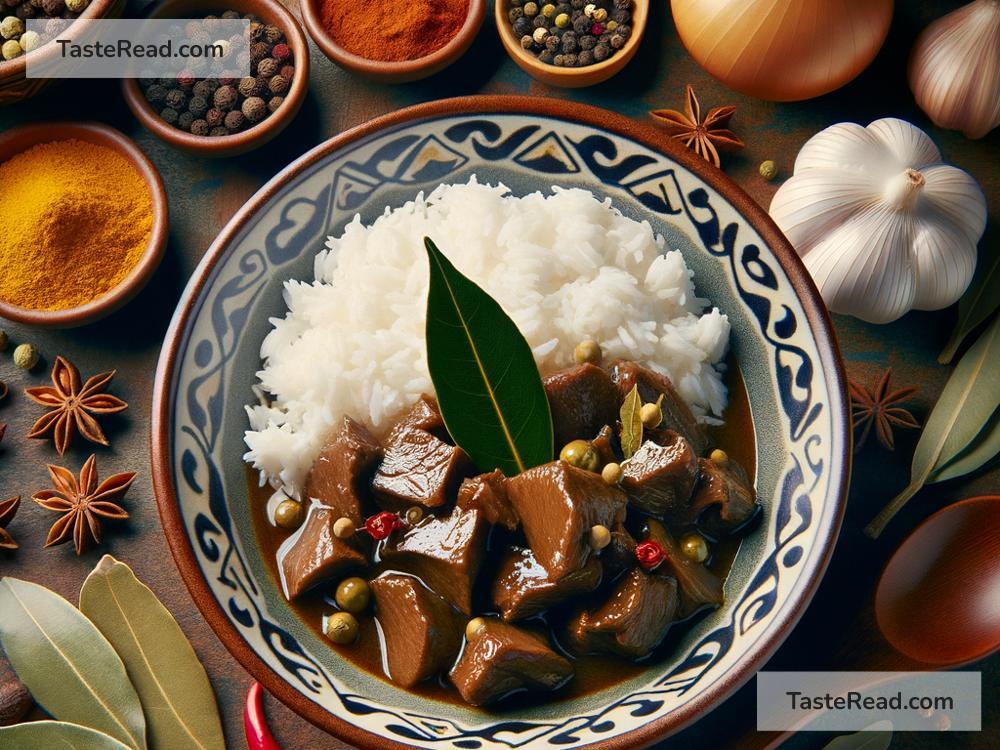Celebrating the Heritage of Filipino Adobo and Its Regional Twists
Filipino cuisine is a treasure chest of flavors, rich history, and vibrant culture. Among all the dishes in the Philippines, one has stood out as a favorite for locals and visitors alike—Adobo. It’s a savory, comforting dish that has become the unofficial “national dish” of the Philippines. Made with simple ingredients and prepared in countless ways, Adobo reflects the country’s creativity, diversity, and deep connection to food.
What is Adobo?
Adobo comes from the Spanish word “adobar,” meaning “to marinate,” but the dish is uniquely Filipino. It’s traditionally made with chicken or pork, vinegar, soy sauce, garlic, bay leaves, and black pepper. These ingredients are simmered together until the meat becomes tender and soaked in the savory, tangy sauce. While it may sound simple, the balance of flavors makes Adobo extraordinary.
The combination of salty and sour, with hints of sweetness and spice, creates a dish that’s comforting and delicious. This is why Adobo is loved by Filipinos all over the world—it’s a reminder of home and the flavors that make their cuisine special.
A Dish with History
Adobo’s roots go back hundreds of years, even before the Spaniards came to the Philippines. Ancient Filipinos used vinegar and salt to preserve food since refrigeration didn’t exist. When the Spanish colonizers arrived in the 16th century, they introduced the term “adobo” to describe the native cooking method that used vinegar. Over time, soy sauce (introduced by Chinese traders) was added to the recipe, creating the version we know and love today.
Adobo tells a story of integration and adaptation. It reflects how Filipino cuisine blends influences from various cultures while staying true to its indigenous roots.
Regional Twists on Adobo
What makes Adobo so exciting is its flexibility. Across the Philippines, each region has its own version of Adobo, reflecting local ingredients, traditions, and tastes.
1. Adobo sa Dilaw (Yellow Adobo)
In Laguna and Batangas, Adobo is often cooked with turmeric, giving it a bright yellow color. Turmeric adds a unique earthy flavor and transforms the dish into something different from the standard soy sauce-based version. This twist is often paired with fish, chicken, or pork, showcasing the region’s agricultural and seaside resources.
2. Adobong Puti (White Adobo)
This version of Adobo skips the soy sauce altogether and relies solely on vinegar, garlic, pepper, and salt for flavor. It has a lighter taste but still maintains the tangy and savory profile of traditional Adobo. Adobong Puti is said to be the closest to the original pre-Hispanic version of the dish.
3. Adobong Gata (Adobo with Coconut Milk)
In the Bicol region, where coconut is abundant, Adobo is enriched with creamy coconut milk, locally known as “gata.” Coconut milk adds a luxurious, rich texture to the dish, balancing the acidity of the vinegar. This version is often spicy, as the Bicolanos are known for their love of chili peppers.
4. Adobos with Local Meats or Seafood
Adobo can feature a wide variety of ingredients depending on the region. In the Visayas, some people make Adobo with squid, calling it “Adobong Pusit.” In Ilocos Norte, they use goat meat, while in Zamboanga, seafood like fish or shrimp is common. These variations highlight the Philippines’ rich biodiversity and creativity in using local produce.
5. Sweet and Savory Adobo
In some parts of Luzon, sugar is added to Adobo for a touch of sweetness. This is perfect for people who prefer a more balanced, slightly sweet flavor.
Why Adobo is Loved Worldwide
Adobo is not just a dish—it’s a cultural icon. For Filipinos living abroad, cooking Adobo is a way of staying connected to their roots. Because the ingredients are easy to find anywhere in the world, Adobo has become a staple for Filipino families no matter where they live.
Its universal appeal lies in its simplicity and adaptability. You can tweak the recipe to your liking—make it spicy, sweet, or creamy. You can use chicken, pork, fish, or even tofu for a vegetarian version. Whatever you choose, the essence of Adobo remains the same: a delicious dish steeped in tradition.
Celebrating Adobo’s Legacy
As Filipinos embrace modern cooking techniques and trends, Adobo continues to evolve. Some chefs today put a fancy twist on Adobo by adding new ingredients or presenting it in creative ways, but the heart of the dish remains true to its humble roots.
Celebrating Adobo is more than just enjoying a good meal; it’s about honoring the rich heritage and diversity of Filipino cuisine. Whether it’s the traditional soy sauce-and-vinegar Adobo or a regional variation like Adobong Gata, each bite tells a story of Filipino resourcefulness and love for food.
Cooking Adobo at Home
If you’ve never tried cooking Filipino Adobo, now is the perfect time! All you need is meat, vinegar, soy sauce, garlic, bay leaves, and peppercorns. Simply marinate, simmer, and enjoy a dish that’s full of flavor. And, as you explore variations, don’t be afraid to experiment. Adobo welcomes creativity—it’s part of what makes it so special.
Closing Thoughts
Adobo is more than just a dish; it’s a celebration of Filipino identity. It connects Filipinos to their history, their communities, and their culture. As we enjoy Adobo in its many forms, we also celebrate the unity and diversity of the Philippines. So, whether you eat it with rice, bread, or on its own, Adobo is a reminder of the flavors that make Filipino food truly exceptional.
Have you ever tried Adobo? What’s your favorite version of this iconic dish? Share your thoughts and let’s celebrate the amazing heritage of Filipino Adobo together!


